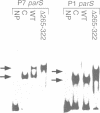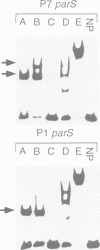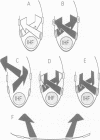Abstract
The cis-acting P1 and P7 parS sites are responsible for active partition of P1 and P7 plasmids to daughter cells. The two sites are similar but function only with ParB proteins from the correct species. Using hybrid ParB proteins and hybrid parS sites, we show that specificity is determined by contacts between bases that lie within two parS hexamer boxes and a region in the ParB C-terminus. We refer to these contacts as discriminator contacts. The P7 discriminator contacts were mapped to 3 and 2 bp respectively within the two parS hexamer boxes, and a 10 amino acid region of P7 ParB. Similarly placed residues of different sequence are responsible for the P1 discriminator contact. The discriminator contacts are distinct from previously identified DNA binding contacts which involve different ParB and parS regions. Deletion of the ParB C-terminus that makes the discriminator contact does not diminish in vitro binding but renders it species independent. The discriminator contact is therefore a negative function, interfering with binding of the wrong ParB, but not providing energy for the binding of the correct one. Similar discriminator contacts might be responsible for specificities seen among families of eukaryotic DNA binding proteins that share common binding motifs.
Full text
PDF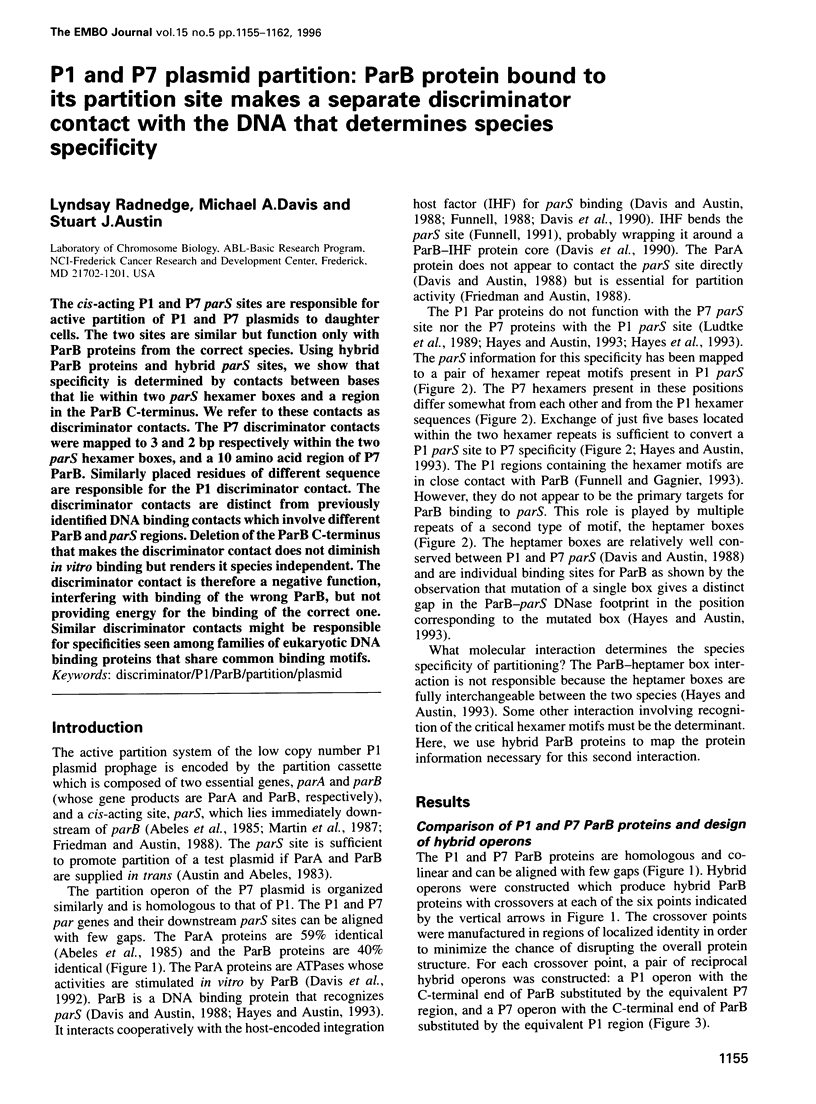
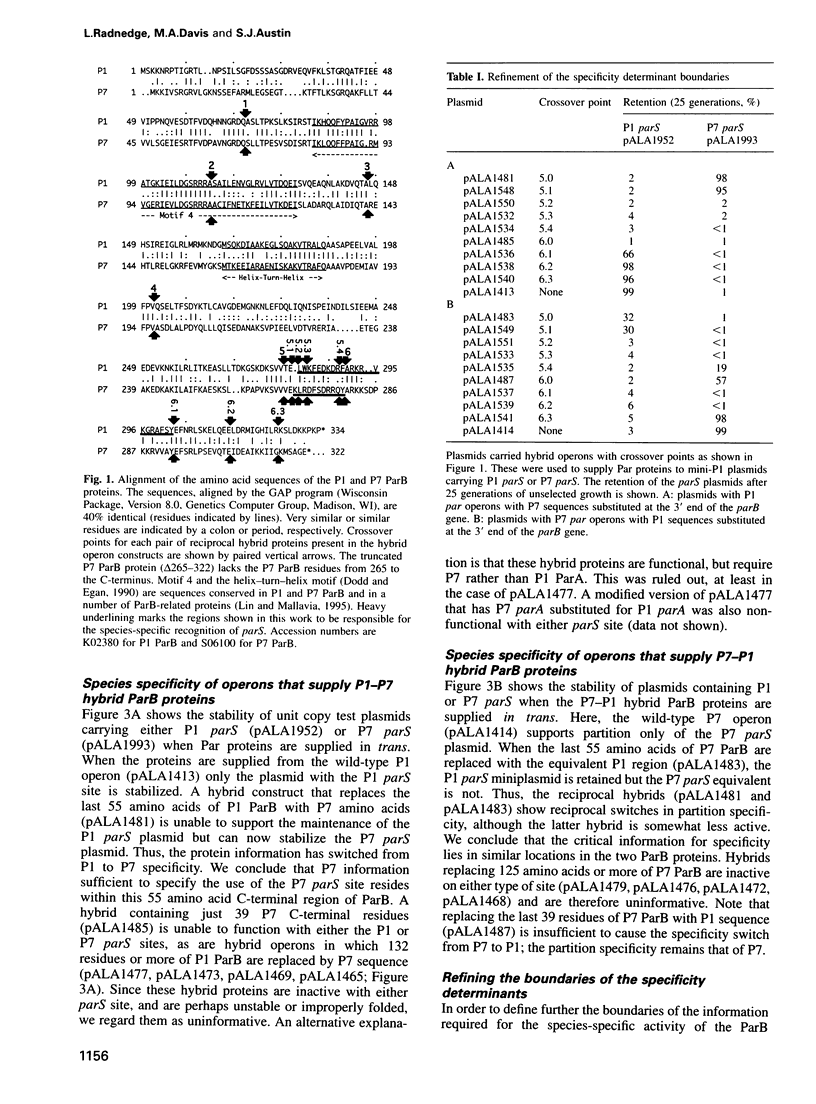
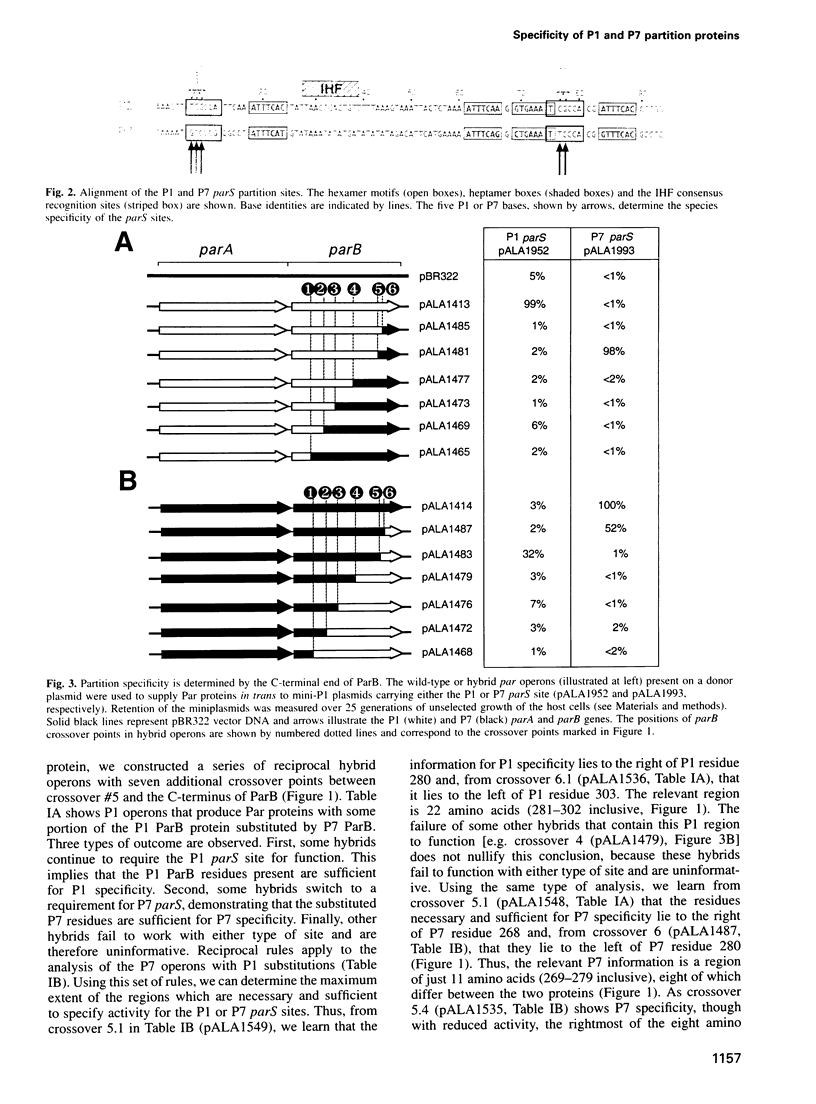
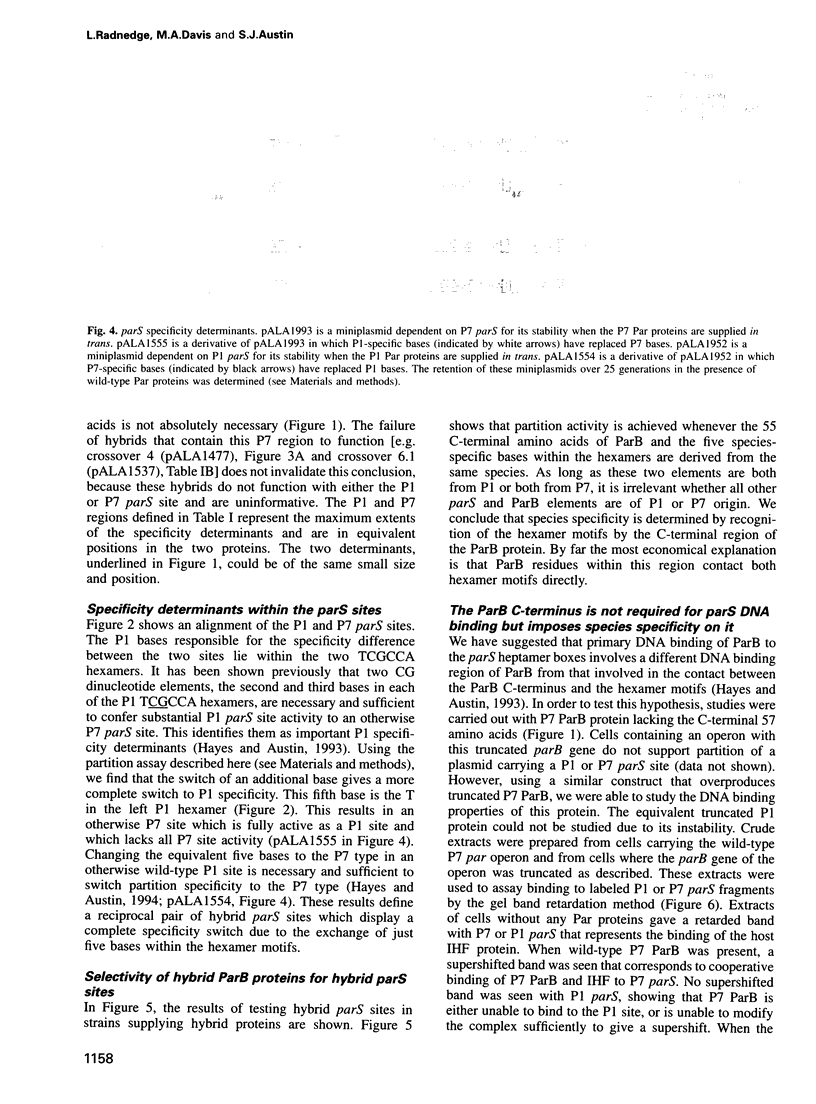
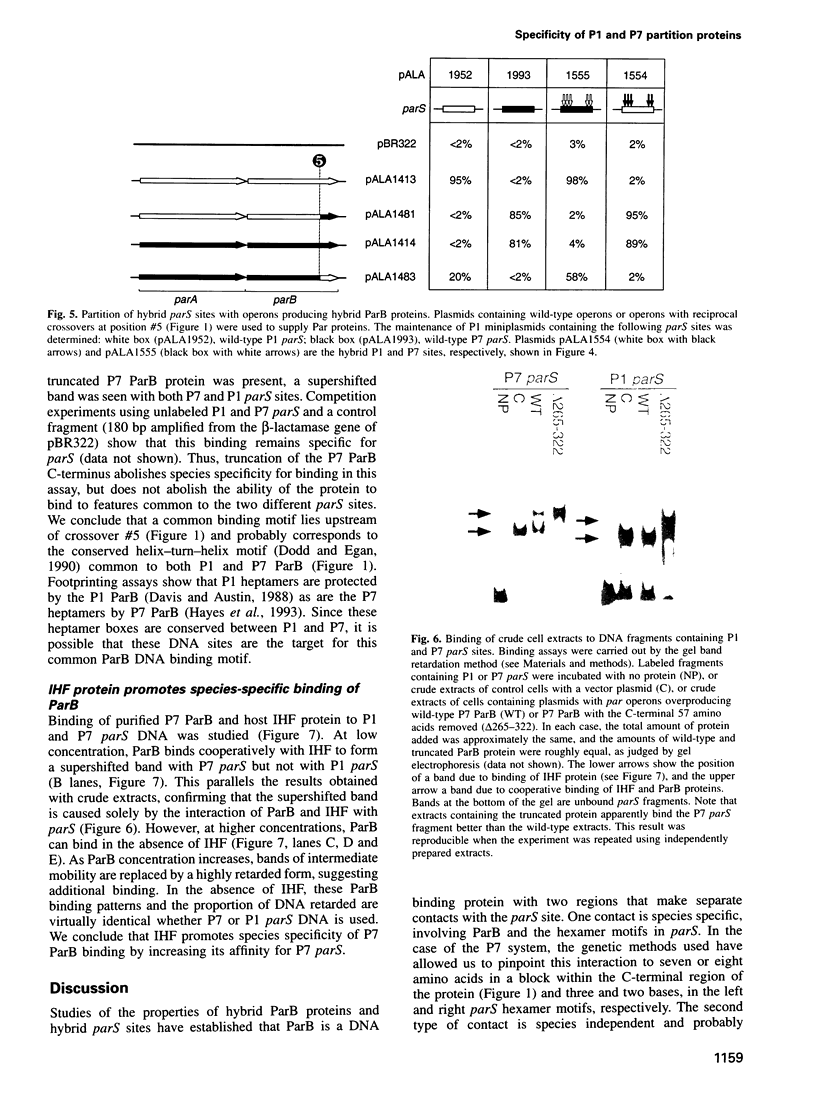
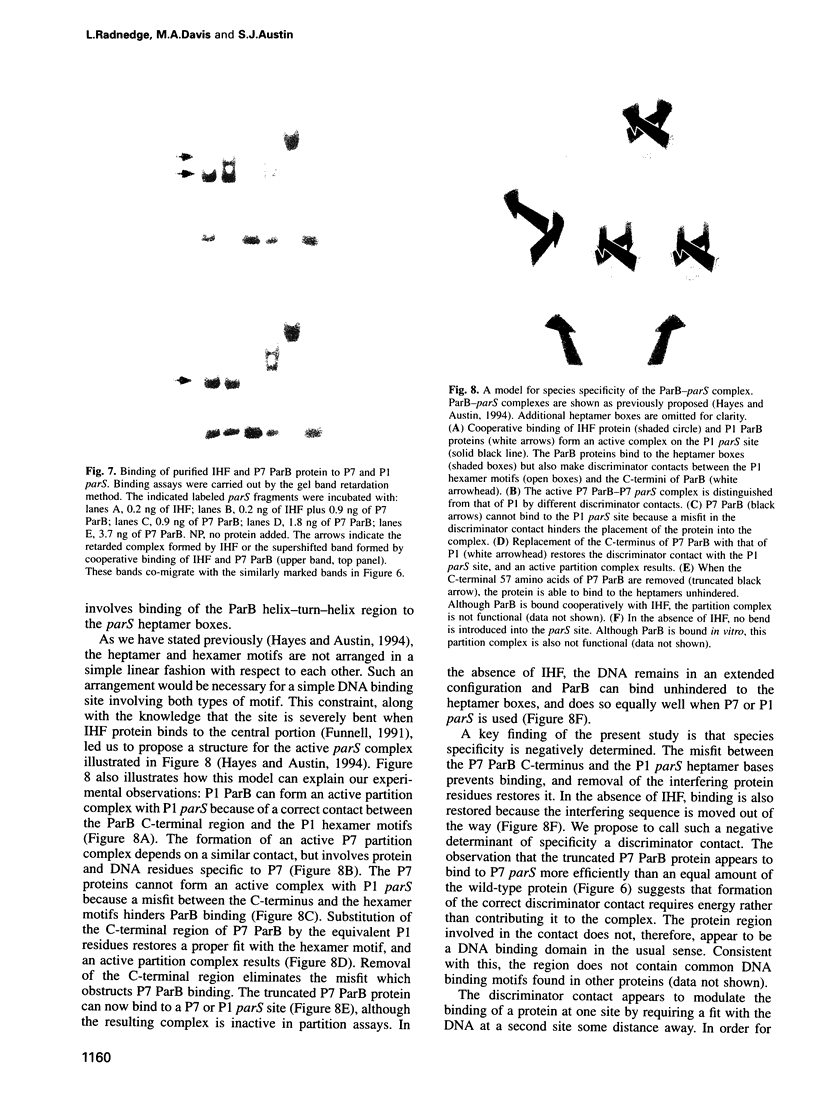
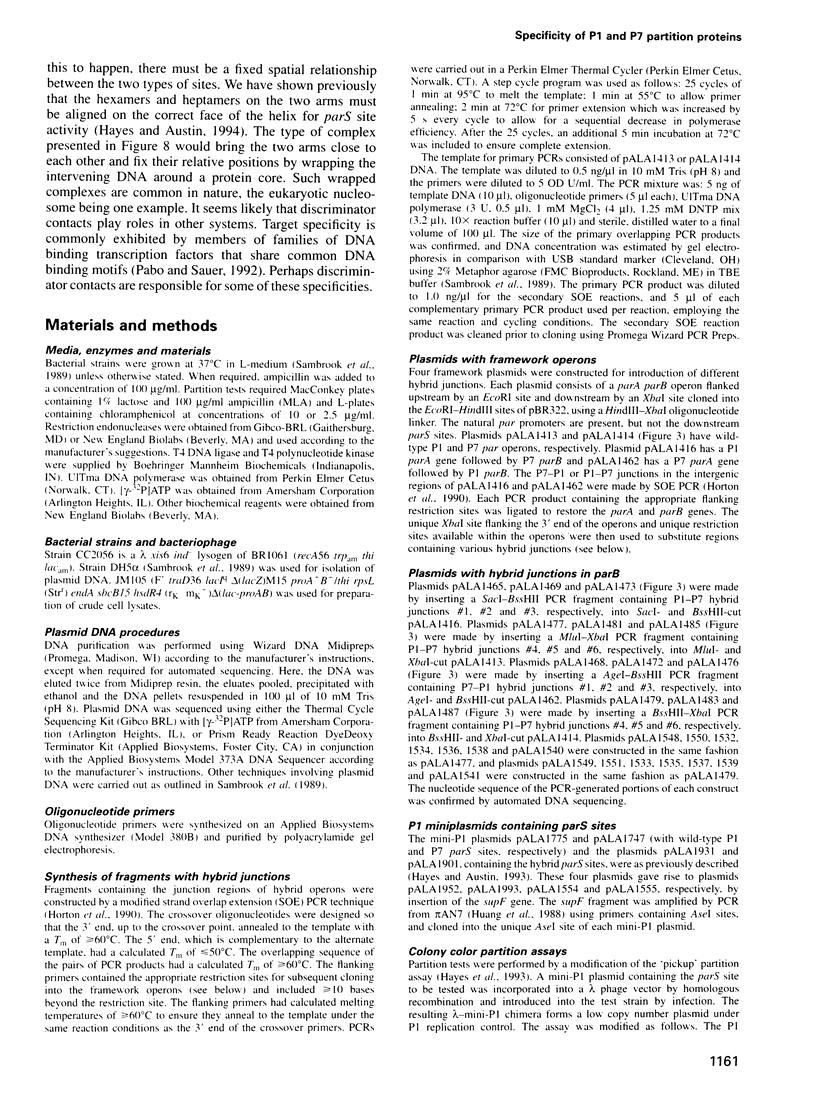
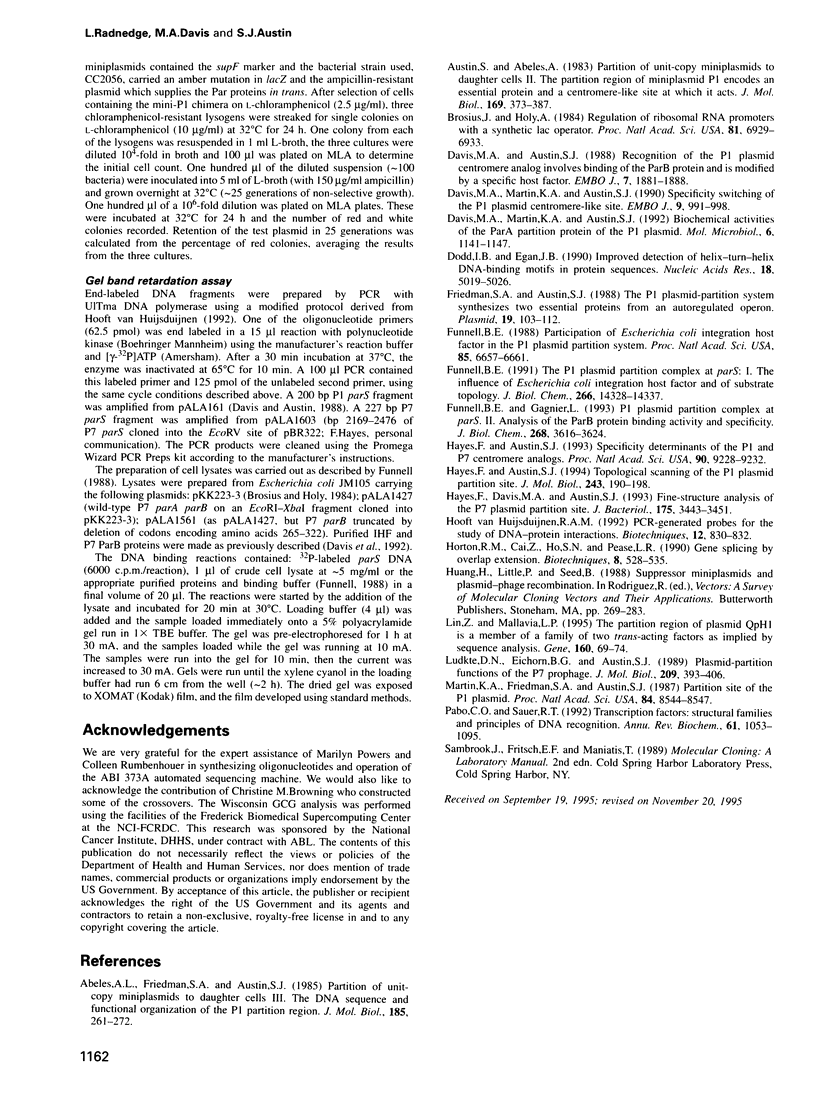
Images in this article
Selected References
These references are in PubMed. This may not be the complete list of references from this article.
- Abeles A. L., Friedman S. A., Austin S. J. Partition of unit-copy miniplasmids to daughter cells. III. The DNA sequence and functional organization of the P1 partition region. J Mol Biol. 1985 Sep 20;185(2):261–272. doi: 10.1016/0022-2836(85)90402-4. [DOI] [PubMed] [Google Scholar]
- Austin S., Abeles A. Partition of unit-copy miniplasmids to daughter cells. II. The partition region of miniplasmid P1 encodes an essential protein and a centromere-like site at which it acts. J Mol Biol. 1983 Sep 15;169(2):373–387. doi: 10.1016/s0022-2836(83)80056-4. [DOI] [PubMed] [Google Scholar]
- Brosius J., Holy A. Regulation of ribosomal RNA promoters with a synthetic lac operator. Proc Natl Acad Sci U S A. 1984 Nov;81(22):6929–6933. doi: 10.1073/pnas.81.22.6929. [DOI] [PMC free article] [PubMed] [Google Scholar]
- Davis M. A., Austin S. J. Recognition of the P1 plasmid centromere analog involves binding of the ParB protein and is modified by a specific host factor. EMBO J. 1988 Jun;7(6):1881–1888. doi: 10.1002/j.1460-2075.1988.tb03021.x. [DOI] [PMC free article] [PubMed] [Google Scholar]
- Davis M. A., Martin K. A., Austin S. J. Biochemical activities of the parA partition protein of the P1 plasmid. Mol Microbiol. 1992 May;6(9):1141–1147. doi: 10.1111/j.1365-2958.1992.tb01552.x. [DOI] [PubMed] [Google Scholar]
- Davis M. A., Martin K. A., Austin S. J. Specificity switching of the P1 plasmid centromere-like site. EMBO J. 1990 Apr;9(4):991–998. doi: 10.1002/j.1460-2075.1990.tb08201.x. [DOI] [PMC free article] [PubMed] [Google Scholar]
- Dodd I. B., Egan J. B. Improved detection of helix-turn-helix DNA-binding motifs in protein sequences. Nucleic Acids Res. 1990 Sep 11;18(17):5019–5026. doi: 10.1093/nar/18.17.5019. [DOI] [PMC free article] [PubMed] [Google Scholar]
- Friedman S. A., Austin S. J. The P1 plasmid-partition system synthesizes two essential proteins from an autoregulated operon. Plasmid. 1988 Mar;19(2):103–112. doi: 10.1016/0147-619x(88)90049-2. [DOI] [PubMed] [Google Scholar]
- Funnell B. E., Gagnier L. The P1 plasmid partition complex at parS. II. Analysis of ParB protein binding activity and specificity. J Biol Chem. 1993 Feb 15;268(5):3616–3624. [PubMed] [Google Scholar]
- Funnell B. E. Participation of Escherichia coli integration host factor in the P1 plasmid partition system. Proc Natl Acad Sci U S A. 1988 Sep;85(18):6657–6661. doi: 10.1073/pnas.85.18.6657. [DOI] [PMC free article] [PubMed] [Google Scholar]
- Funnell B. E. The P1 plasmid partition complex at parS. The influence of Escherichia coli integration host factor and of substrate topology. J Biol Chem. 1991 Aug 5;266(22):14328–14337. [PubMed] [Google Scholar]
- Hayes F., Austin S. J. Specificity determinants of the P1 and P7 plasmid centromere analogs. Proc Natl Acad Sci U S A. 1993 Oct 1;90(19):9228–9232. doi: 10.1073/pnas.90.19.9228. [DOI] [PMC free article] [PubMed] [Google Scholar]
- Hayes F., Austin S. Topological scanning of the P1 plasmid partition site. J Mol Biol. 1994 Oct 21;243(2):190–198. doi: 10.1006/jmbi.1994.1646. [DOI] [PubMed] [Google Scholar]
- Hayes F., Davis M. A., Austin S. J. Fine-structure analysis of the P7 plasmid partition site. J Bacteriol. 1993 Jun;175(11):3443–3451. doi: 10.1128/jb.175.11.3443-3451.1993. [DOI] [PMC free article] [PubMed] [Google Scholar]
- Hooft van Huijsduijnen R. A. PCR-generated probes for the study of DNA-protein interactions. Biotechniques. 1992 Jun;12(6):830–832. [PubMed] [Google Scholar]
- Horton R. M., Cai Z. L., Ho S. N., Pease L. R. Gene splicing by overlap extension: tailor-made genes using the polymerase chain reaction. Biotechniques. 1990 May;8(5):528–535. [PubMed] [Google Scholar]
- Huang H. V., Little P. F., Seed B. Improved suppressor tRNA cloning vectors and plasmid-phage recombination. Biotechnology. 1988;10:269–283. doi: 10.1016/b978-0-409-90042-2.50020-9. [DOI] [PubMed] [Google Scholar]
- Lin Z., Mallavia L. P. The partition region of plasmid QpH1 is a member of a family of two trans-acting factors as implied by sequence analysis. Gene. 1995 Jul 4;160(1):69–74. doi: 10.1016/0378-1119(95)00192-9. [DOI] [PubMed] [Google Scholar]
- Ludtke D. N., Eichorn B. G., Austin S. J. Plasmid-partition functions of the P7 prophage. J Mol Biol. 1989 Oct 5;209(3):393–406. doi: 10.1016/0022-2836(89)90005-3. [DOI] [PubMed] [Google Scholar]
- Martin K. A., Friedman S. A., Austin S. J. Partition site of the P1 plasmid. Proc Natl Acad Sci U S A. 1987 Dec;84(23):8544–8547. doi: 10.1073/pnas.84.23.8544. [DOI] [PMC free article] [PubMed] [Google Scholar]
- Pabo C. O., Sauer R. T. Transcription factors: structural families and principles of DNA recognition. Annu Rev Biochem. 1992;61:1053–1095. doi: 10.1146/annurev.bi.61.070192.005201. [DOI] [PubMed] [Google Scholar]





